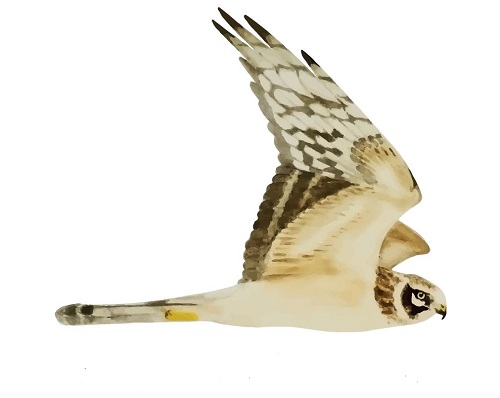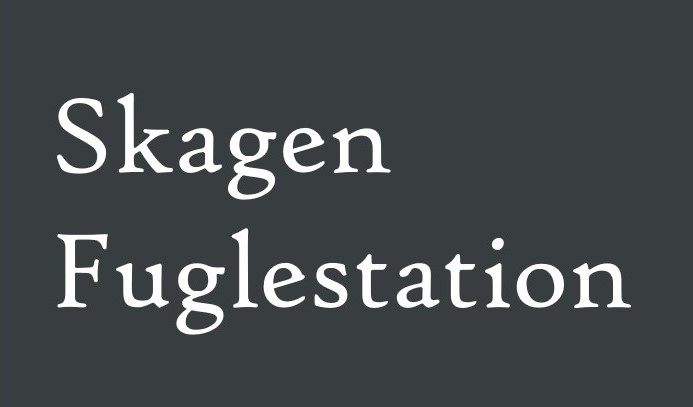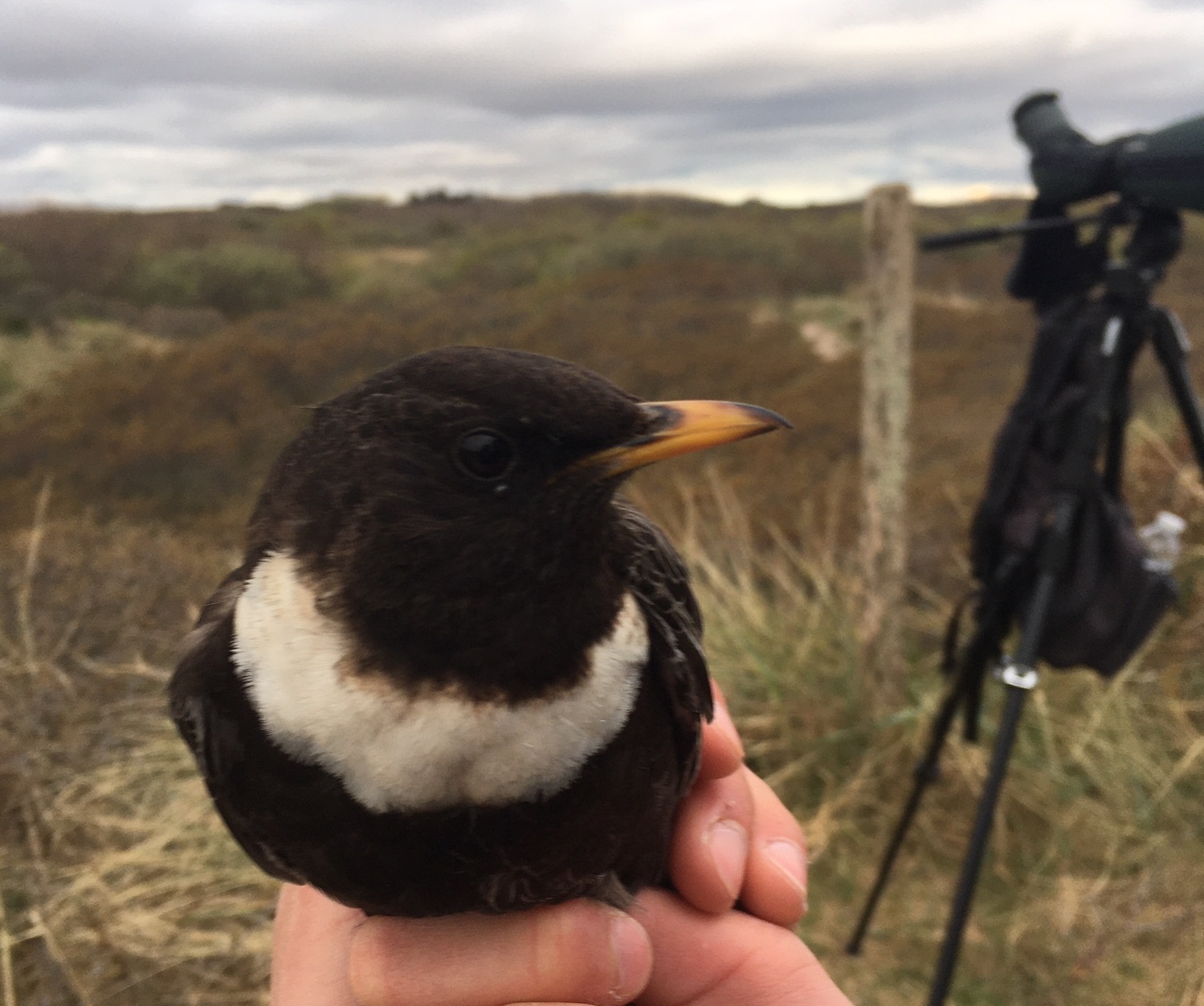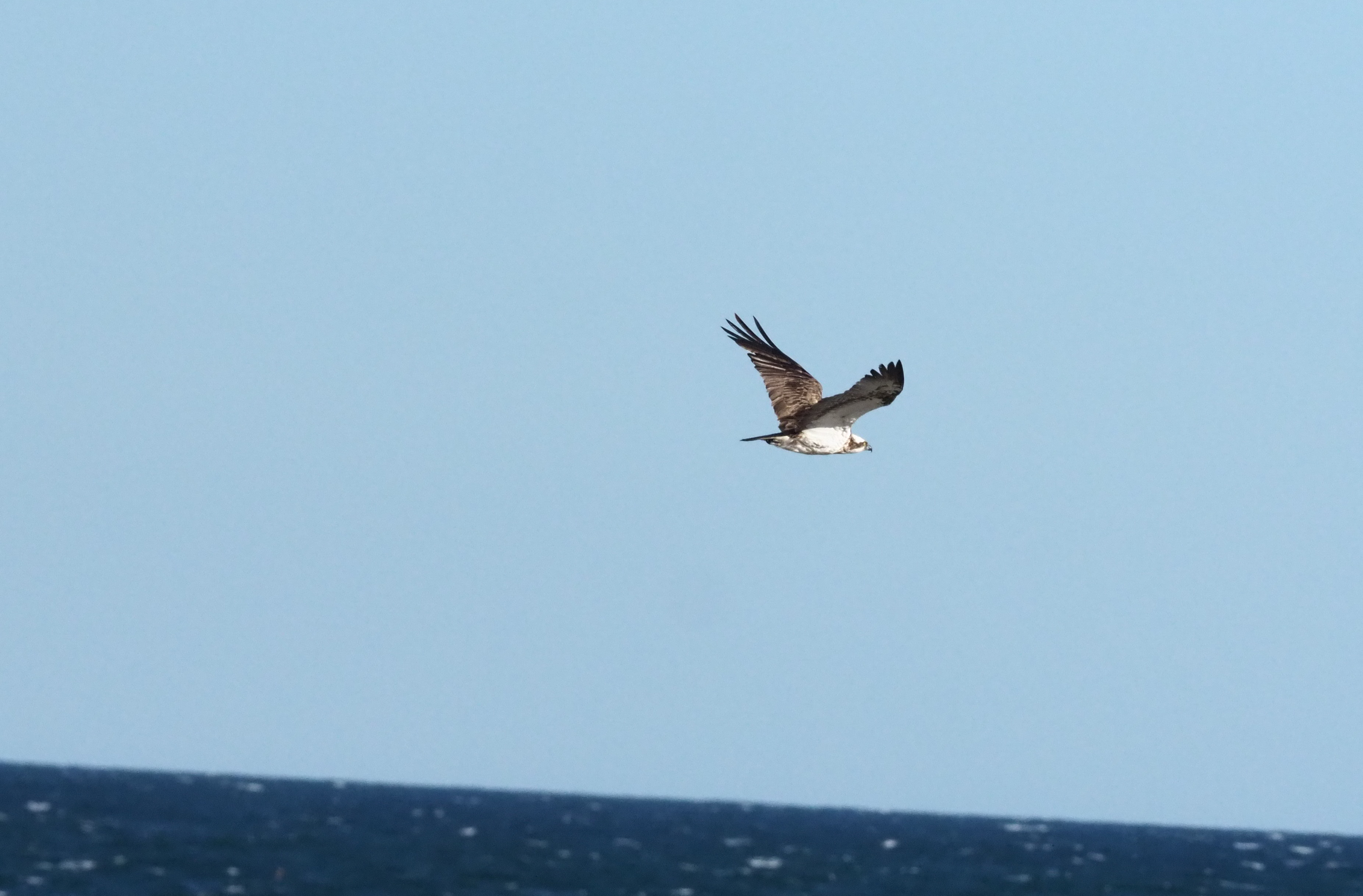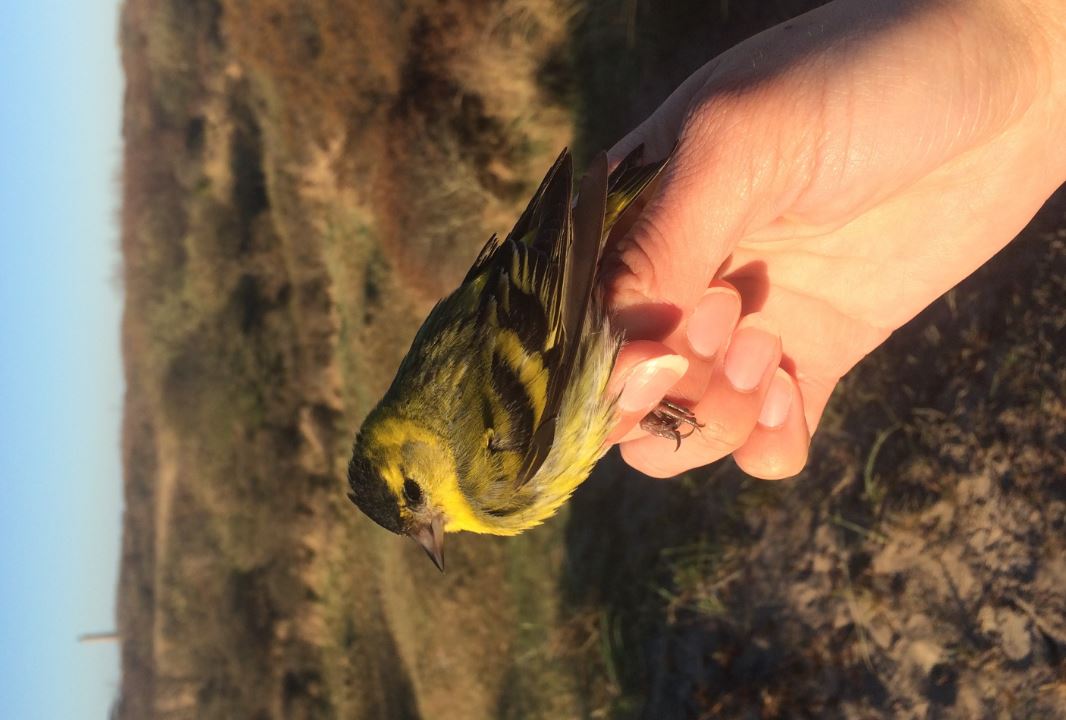Her på Skagen Fuglestations blog bringes korte nyheder i dagbogsformat om hændelser på fuglestationen.
Første CES ringmærkning i år
I dag ringmærkede vi Jennes Sø. Daniel Fanny og jeg åbnede vi nettene. Både Michael og Simon var ude at hjælpe, vi havde dog ikke synderligt travlt. 19 nye ringmærkede fugle blev det til hvor de sjoveste var 3 sjagger og en rørspurv genfangst som var ringmærket og genfundet de sidste par år, så det må være en af de lokale ynglefugle. Jennes Sø er et Constant Effort Site (CES), hvilket betyder at det er standardiseret for ringmærkning af ynglefugle. Det vil sige at det er samme antal netmeter, placering og timer der bliver ringmærket hvert år, på bestemte datoer. Efter vi havde lukket nettet, fik vi en fyraftens øl sammen med Jenne og Michael.
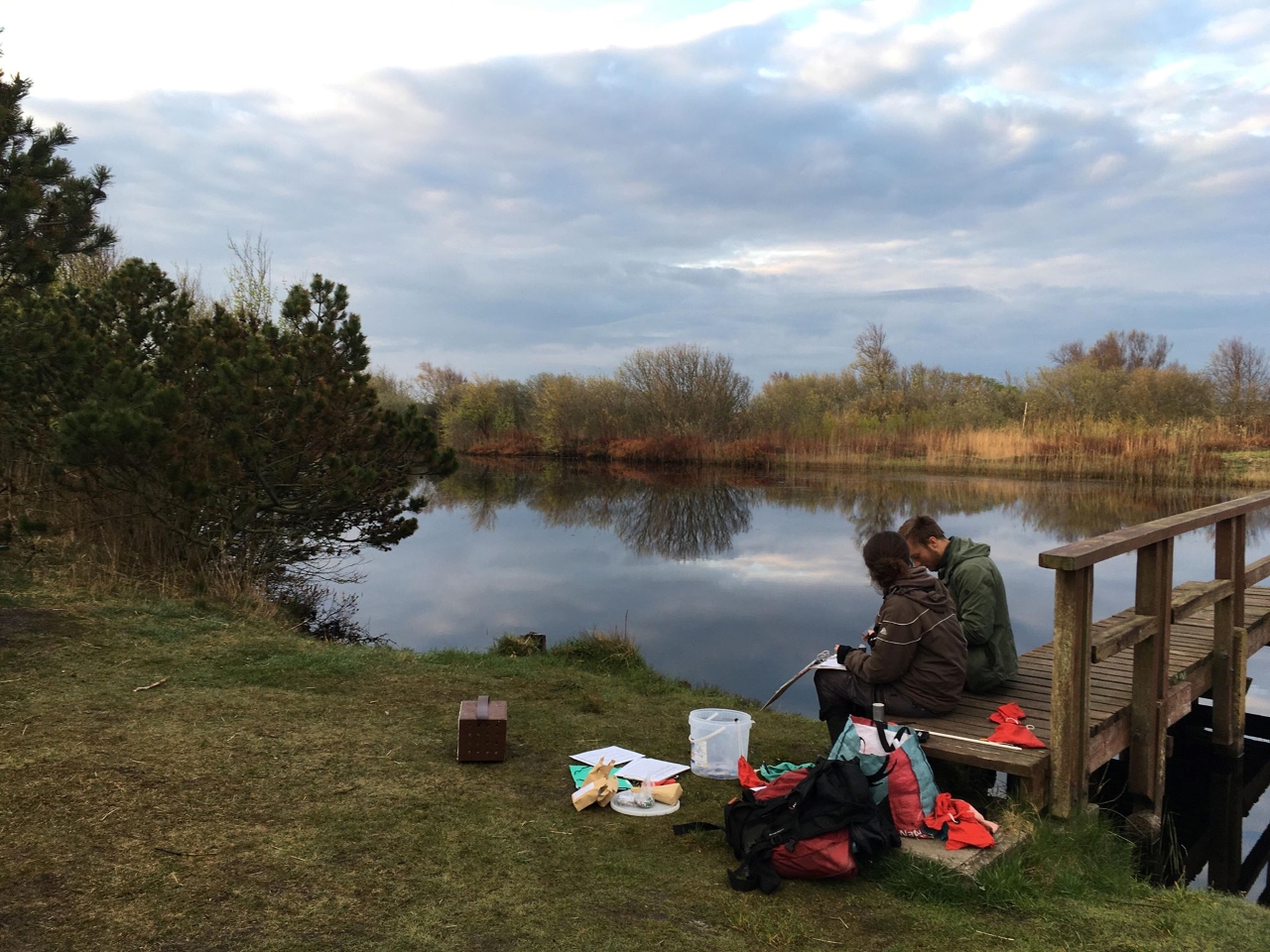
Lisa og Frederik var ude på Nordstrand på morgenobs sammen med Knud, Jørgen Hulbæk, Thomas W. Johansen og Oluf Lou. Her blev der set rigtig mange fugle, ny dagsrekord for trækkende rødstrubede lommer 2723, 38 Almindelige kjover og 2 Islommer, 35 havterner og 1378 Fjordterner. Vanvittig dag.
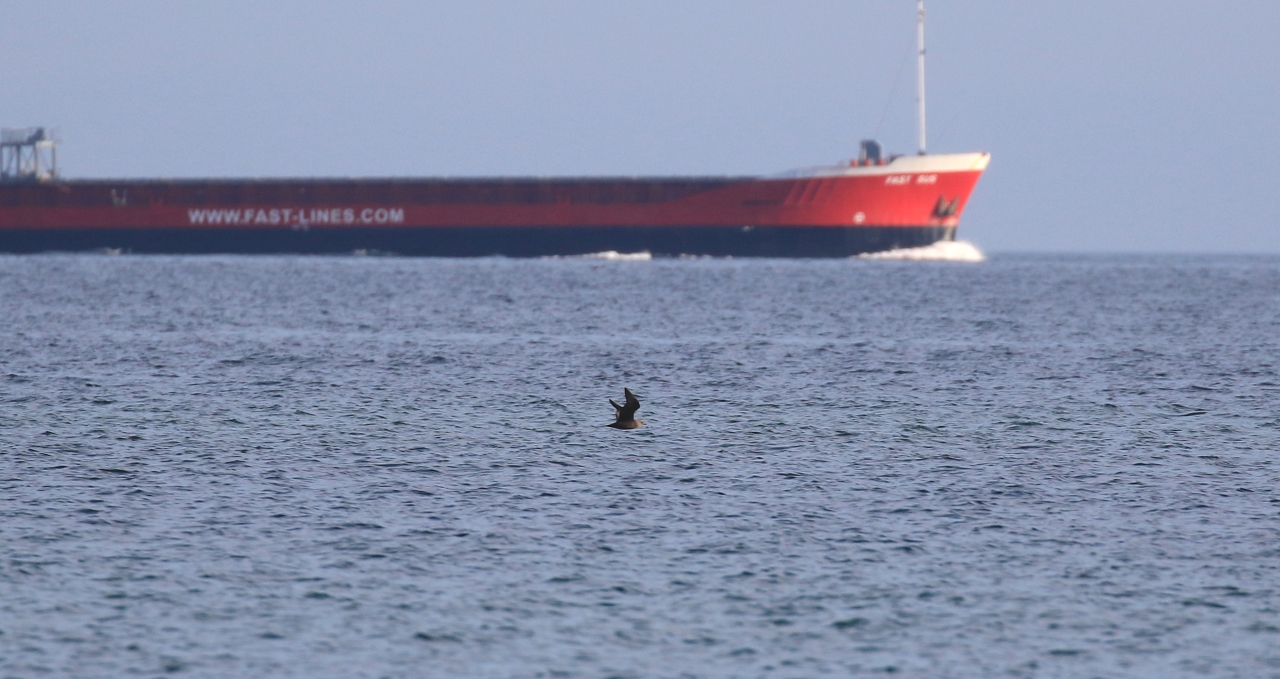
Almindelig Kjove, Nordstrand 5/2/2020
Lisa og Daniel var forbi Jørgen og Agnete til eftermiddagskaffe.
Hjemme ved Fyret åbnede vi nettene og havde dem åbne til kl 21.15 vi fangede dog kun en enkelt gærdesanger. Frederik var rundt ude at gå en tur gennem ellekrattet og ud til Grenen søen. Mens vi passede net, bearbejdede vi rovfugle og ringmærkningsdata. Fanny fik også lavet en film om de radiotaggede rødhalse. En kongeørn blev Meldt på zello inde over Skagen By, vi fik set den fra det grå fyr.
Ringmærkning: (Jennes Sø+ Nordstjernevej)
Gærdesmutte - Wren - 2
Rødhals - Robin - 3
Solsort - Blackbird - 1
Sjagger - Fieldfare - 3
Broget Fluesnapper - Pied Flycatcher - 1
Musvit - Great tit - 2
Grønirisk - Greenfinch - 1
Løvsanger - Willow Warbler - 3
Gransanger - Chiffchaff - 4
Munk - Blackcap - 1
Gærdesanger - Lesser Whitethroat - 5
Sangdrossel - Song Thrush - 1
Sum: 27
Folk: Simon S. Christiansen, Esben E. Hansen, Lisa Vergin, Fanny Rey, Frederik R. Johansen, Knud Pedersen, Fanny Rey, Jørgen Hulbæk, Thomas W. Johansen og Oluf Lou
Klik her for at se dagens observationer indtastet i Dofbasen af observatører i området
Klik her for at se opsummeret observationer af rovfugle i Skagen
Perfect first of May with a “bird fall out”
At 5:00 Esben and I opened the nets at Kabeltromlen. We could already hear that there are many birds in the area and where not disappointed. In total, we ringed together with Frederick and Simon 136 birds plus caught 3 recaptures – that’s so far our best spring ringing morning! The most common birds were Willow Warblers (Løvsanger) and Blackcaps (Munk), but we also caught 2 Wood Warblers (Skovsanger), a very nice adult male Wheatear (Stenpikker) and the first Common Whitethroat (Tornsanger) for the season. During some busy rounds Jørgen and Igor kept us company, which is always very nice :-) And also Fredericks family came to visit him and were able to see his quickly and very good developed ringing skills.
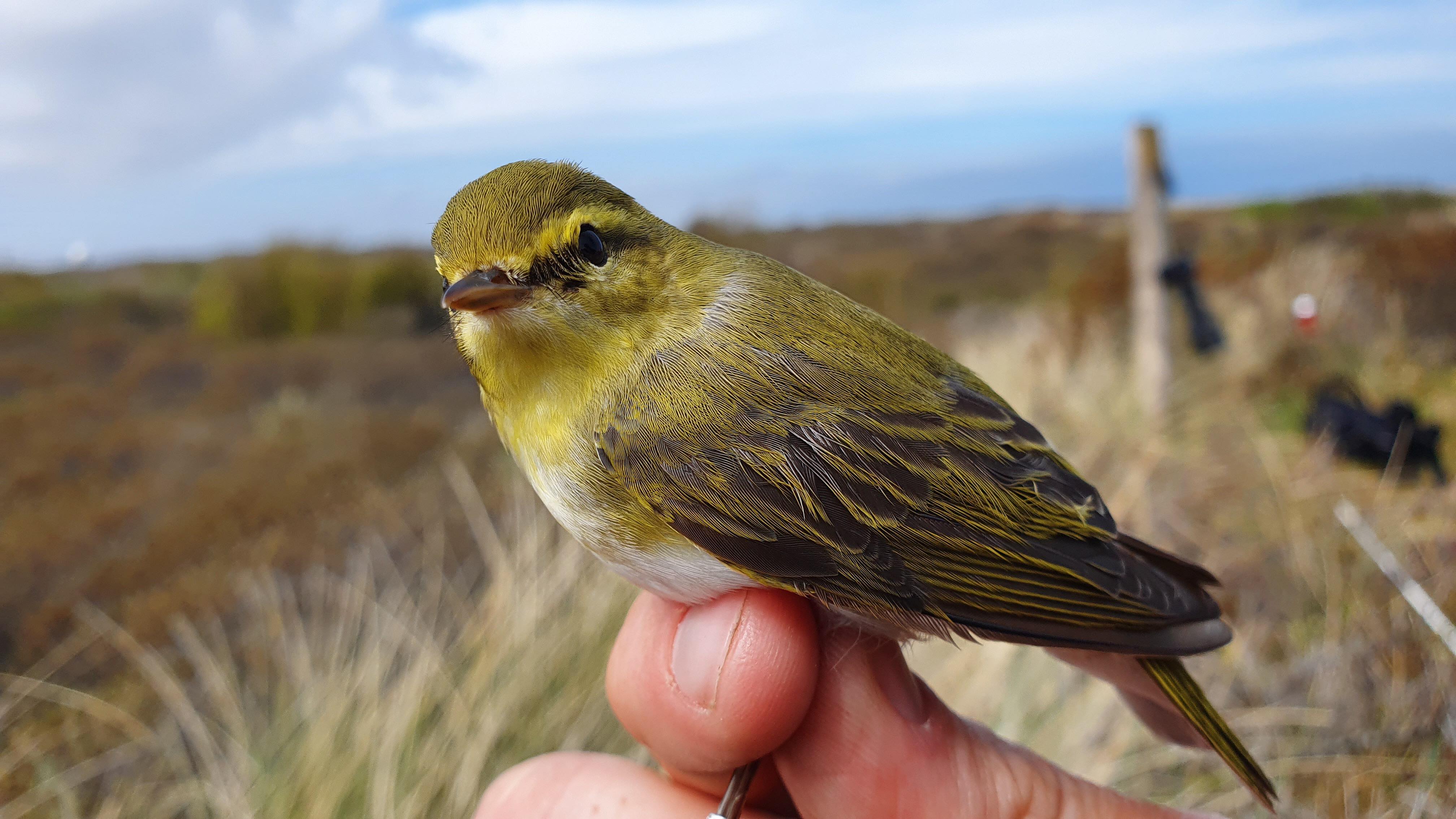
Fanny and Daniel went out for morning observations at Nordstrand together with Knud and also had a quite decent morning with a beautiful Yellow-Billed Loon (Hvidnæbbet Lom) – that we others thankfully were also able to see from the ringing spot – and close Artic Skuas (Almindelig Kjove), many Gannets (Sule) and Common Scoters (Sortand) and the season’s first Red-backed Shrike (Rødrygget Tornskade)!
In the afternoon, Daniel and Esben prepared the nets for the CES ringing (Constant Effort Site) which we start tomorrow at Jennes Sø. During that, they saw a Wrynek (Vendehals) feeding at an ant hill very close to the spot where the nets going to stand tomorrow, so all fingers crossed that we’re going to manage to catch this awesome bird during the CES!!
Later, we opened the nets in the Lighthouse Garden as well and caught a male Redstart (Rødstjert) from Belgium, which was super nice!
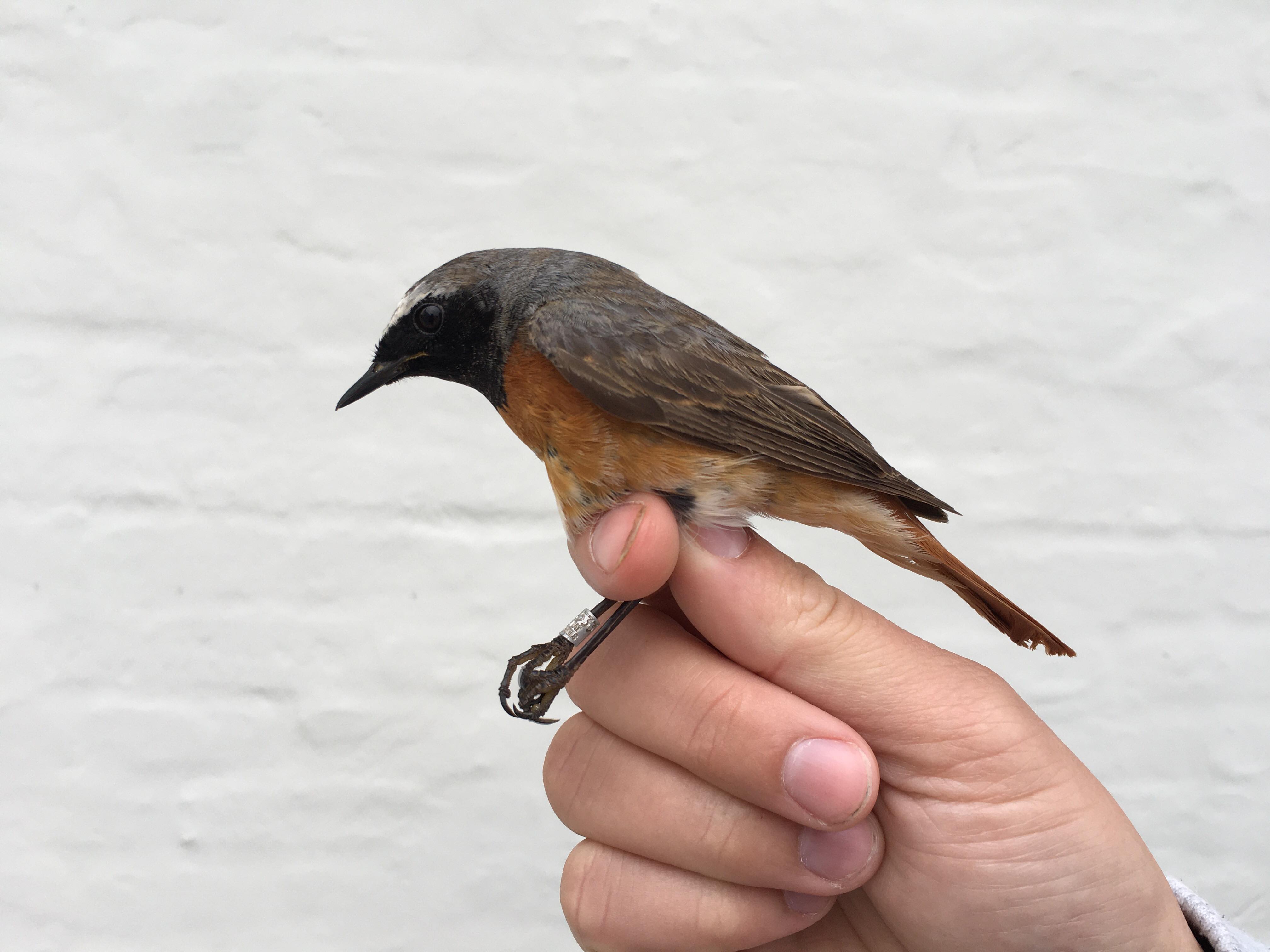
So all in all it was a really, really good bird-day! :-)
Birds ringed at Kabeltromle:
Løvsanger – Willow Warbler: 55
Munk – Blackcap: 39
Rødhals – Robin: 10
Gærdesanger – Lesser Whitethroat: 9
Gransanger – Chiffchaff: 8
Broget Fluesnapper – Pied Flycatcher: 3
Sangdrossel – Song Thrush: 2
Skovsanger – Wood Warbler: 2
Fuglekonge – Goldcrest: 2
Tornsanger – Common Whitethroat: 1
Gærdesmutte – Wren: 1
Stenpikker – Wheatear: 1
Bird ringed at the Lighthouse Garden:
Rødhals – Robin: 1
Løvsanger – Willow Warbler: 1
Rødstjert – Redstart: 2
Klik her for at se opsummeret observationer af rovfugle i Skagen
Klik her for at se dagens observationer indtastet i Dofbasen af observatører i området
People: Simon S. Christiansen, Daniel Bloche, Fanny Rey, Esben E. Hansen, Frederik R. Johansen, Knud Pedersen, Jørgen Kabel + Igor and Lisa Vergin
Dissekering og afslapning
Tidligt i morges, klokken 00.00, tog Daniel og Esben på natfangst. De fangede desværre ikke noget, men så to præstekraver, en and og en småfugl. De tog hjem igen klokken 02.00.
I dag havde DMI lovede virkeligt blæsende vejr, og senere regn. Så i dag kom nettene ikke op, og vi kunne selv bestemme om vi ville sove længe i dag!
Jeg havde en stor lyst til noget morgen obs i dag, så jeg tog på morgenobs! Der skete ikke så meget, men der kom alligevel nogle meget fine ting:)
Der kom bl.a. Dværgfalk, Fiskeørn, Blå Kærhøg, Ride og Ringdrossel.
Dagens fedeste oplevelse, var da en Dværgfalk jagede en flok på 6 Ringdrossler! Det var ret vildt. Dværgfalk fik ikke fanget nogle Ringdrossler.
Senere tog Fanny til antennen, for at tjekke om der stadig var en Rødhals tilbage, og det var der.
Omkring klokken 13.00 skulle vi dissekere en Rødstrubet Lom! Det var ret spændende!

Nu når vi ikke har været så meget i felten i dag, har Esben haft massere tid til at gå alle vores ringmærknings data igennem. Esben har også haft lidt tid til at bygge videre på vores Rørdrum-fælde. Det bliver vildt spændende at se om den kan fange en en gang ude i fremtiden!
Folk: Simon S. Christiansen, Lisa Vergin, Daniel Bloche, Fanny Rey, Esben E. Hansen og Frederik R. Johansen
Klik her for at se dagens observationer indtastet i Dofbasen af observatører i området
Klik her for at se opsummeret observationer af rovfugle i Skagen
Ring Ouzel and moult session
Although there were many thrushes (Drossler) on migration, nearly non of them flew into the nets at Grenen during the early rounds. Thus, we had a quite start of the ringing morning. Luckily for Simon, Lisa, Frederik and me, few rounds later a Ring Ouzel (Ringdrossel) flew into the net. That was the first male adult this year and after that nice catch we had some more birds in the nets and also some other highlights: a male adult Pied Flycatcher (Broget Fluesnapper), some Redstarts (Rødstjert) and a Bullfinch (Dompap). Besides these ringing, another exiting highlight was the missing audiomoph. After placing it in the ringing site for the night, it was vanished this morning. After searching alongthe bushes Simon found a first lead to it and quickly also the audiomoph, on which someone tried to open the lid. Currently we are listening to the recordings and are excited if we might find out who or what tried to eat it. Meanwhile, Fanny and Esben had a quite observation together with Knud on the North Beach.
After our observation and ringing morning we all had a lovely breakfast together. Later on we tried out some other methods to catch birds. Using a pyramid trap with eggs we were hoping to catch some Crows (Krage) or Magpies (Husskade). The last days Lisa and Fanny prepared a session on the aging of two Sylvia species – Lesser Whitethroat (Gærdesanger) and Common Whitethroat (Tornsanger) – during Spring. We had the session this afternoon and hope to catch some more of them during the next ringing days to use this knowledge in practice. Moreover, we are happy about the pictures which Leif and Lisbeth send us.
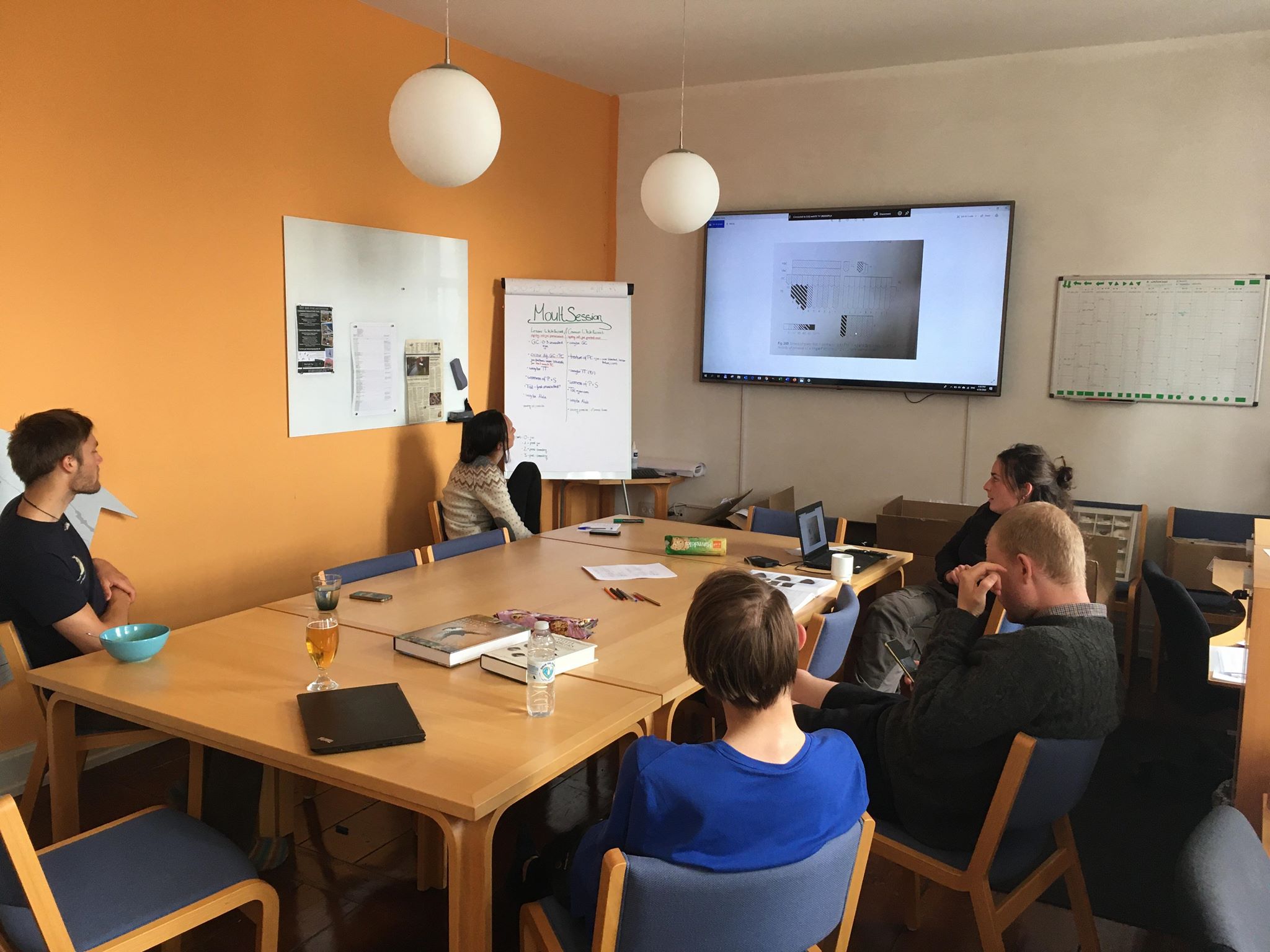
Birds ringed at Kabeltrommel:
Vindrossel – Redwing: 1
Solsort – Blackbird: 1
Ringdrossel – Ring Ouzel: 1
Rødhals – Robin: 3
Løvsanger – Willow Warbler: 10
Gærdesanger – Lesser Whitethroat: 5
Gærdesmutte – Wren: 1
Rødstjert – Redstart: 3
Broget Fluesnapper – Pied Flycatcher: 1
Munk – Blackcap: 2
Rørspurv – Reed Bunting: 1
Dompap – Bullfinch: 1
Gransanger – Chiffchaff: 4
People: Simon S. Christiansen, Lisa Vergin, Fanny Rey, Esben E. Hansen, Frederik R. Johansen, Knud Pedersen, Jørgen Kabel + Igor and Daniel Bloche
Klik her for at se dagens observationer indtastet i Dofbasen af observatører i området
Klik her for at se opsummeret observationer af rovfugle i Skagen
New arrival on the ringing with cool bird beside !
Esben and I opened the nest at 5:00 this morning, Simon joined us for the first round. The first round was mostly Thrushes with a beautiful Ring Ouzel (Ringdrossel). This is the fourth caught this season! During the second round we tagged the last Robin (Rødhals) for the monitoring project! We are very happy because everything went very well with the tagging and almost all the birds are not seen by the antenna that mean they have probably migrated. In total we tagged 19 Robin for 2 weeks.
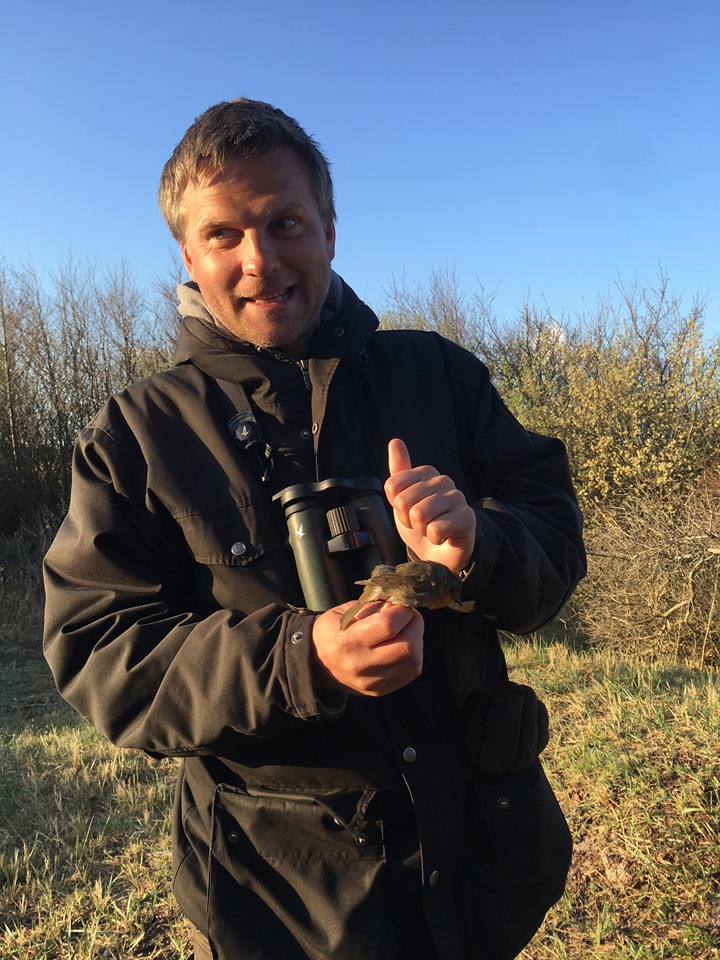
We had the firsts Pied Flycatcher (Broget Fluesnapper) who were two males. For this species it is the males who migrate first to be the first one in the territory and wait for the female to come. We also had a couple of Lesser Redpoll (Gråsisken) with a beautiful adult male with beautiful red colours in the breast. It was a nice morning with a good variety of species, 14 different species .
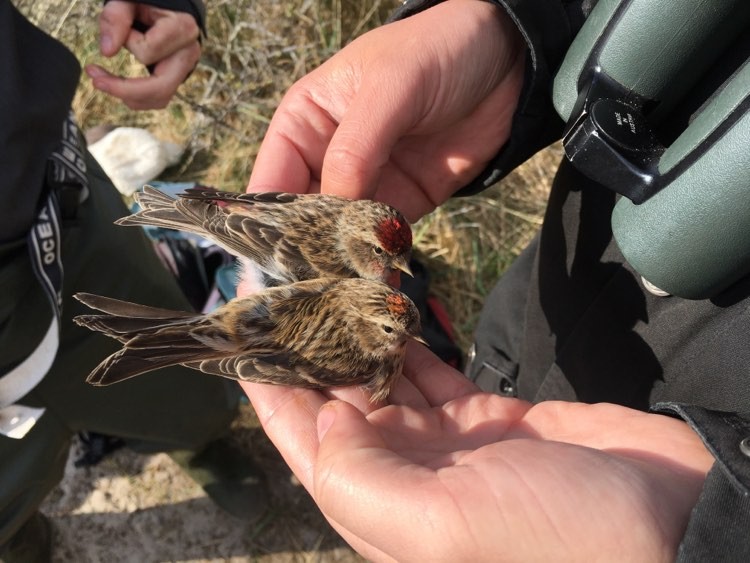
Frederik and Daniel went in the morning observation at Grenen, the highlights of the morning are five Artic Skua (Almindelig Klove), a Serin (Gulrisk) who past very close to the spot and fly around and 450 Red-throated diver (Rødstrubet Lom) in a short amount of time with a very big flock of 62 birds at once !
Lisa stayed at the observatory to have her lecture for her master courses during the all morning.
This afternoon we all went to the Cormorant (Skarv) colony to do one of the weekly monitoring of the colony, we have to count the number of active nest (with bird on the nest) and see the behaviour of the bird like incubating bird, displaying or number of chicks. In total we had 29 active nests with some bird incubating so we hope that we will see some chicks in the next weeks!
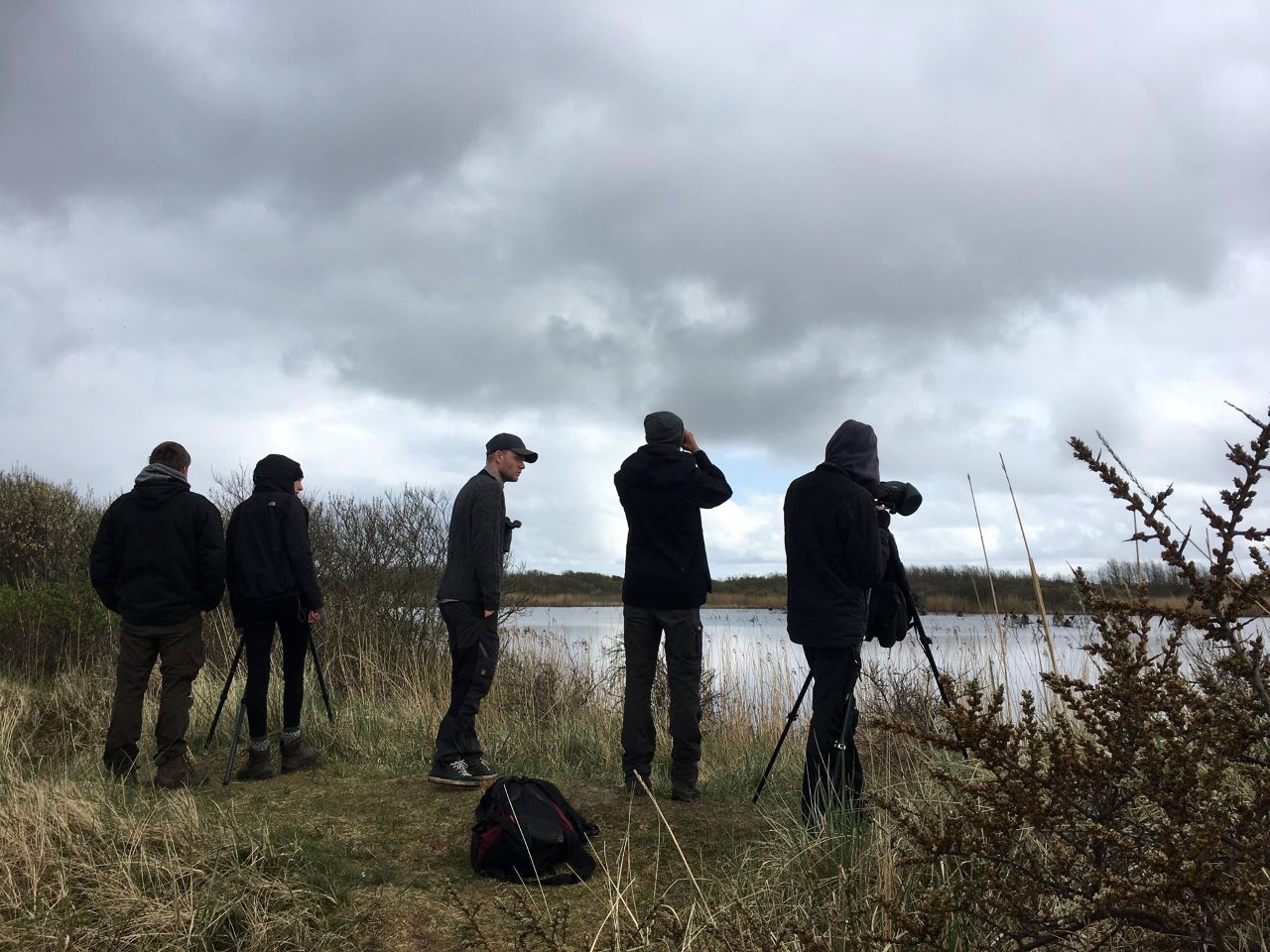
This evening, Frederik went out to setup the audiomoth for recording bird nocturnal migration during the night. We have analysed the recording of the night of the 17 to the 18 of April that you can check on Trektellen via this link: https://www.trektellen.nl/count/view/2601/20200418
Ringing (Kabeltromlen):
|
Gransanger |
5 |
|
|
Munk |
1 |
|
|
Blåmejse |
1 |
|
|
Rørspurv |
1 |
|
|
Bogfinke |
1 |
|
|
Gærdesmutte |
1 |
|
|
Lille Gråsisken |
1 |
|
|
Gærdesanger |
1 |
|
|
Løvsanger |
8 |
|
|
Rødhals |
2 |
|
|
Broget Fluesnapper |
2 |
|
|
Sangdrossel |
6 |
|
|
Vindrossel |
1 |
|
|
Ringdrossel |
1 |
Sum: 32
People: Simon S. Christiansen, Esben E. Hansen, Lisa Vergin, Fanny Rey, Frederik R. Johansen, Knud Pedersen and Fanny Rey
Klik her for at se dagens observationer indtastet i Dofbasen af observatører i området
Klik her for at se opsummeret observationer af rovfugle i Skagen
Skagen Odde
Solrigt Vejr og en hyggelig tur rundt i på Skagen Odde efter 4 timer i ringmærkningen og morgenobs på Verdens ende.
Ringmærkningen gik fint, der var ikke fyldt op med fugle, men med både skovpiber og sortmejse gik vi glade derfra. 2 rødhalse mere blev radiomærket.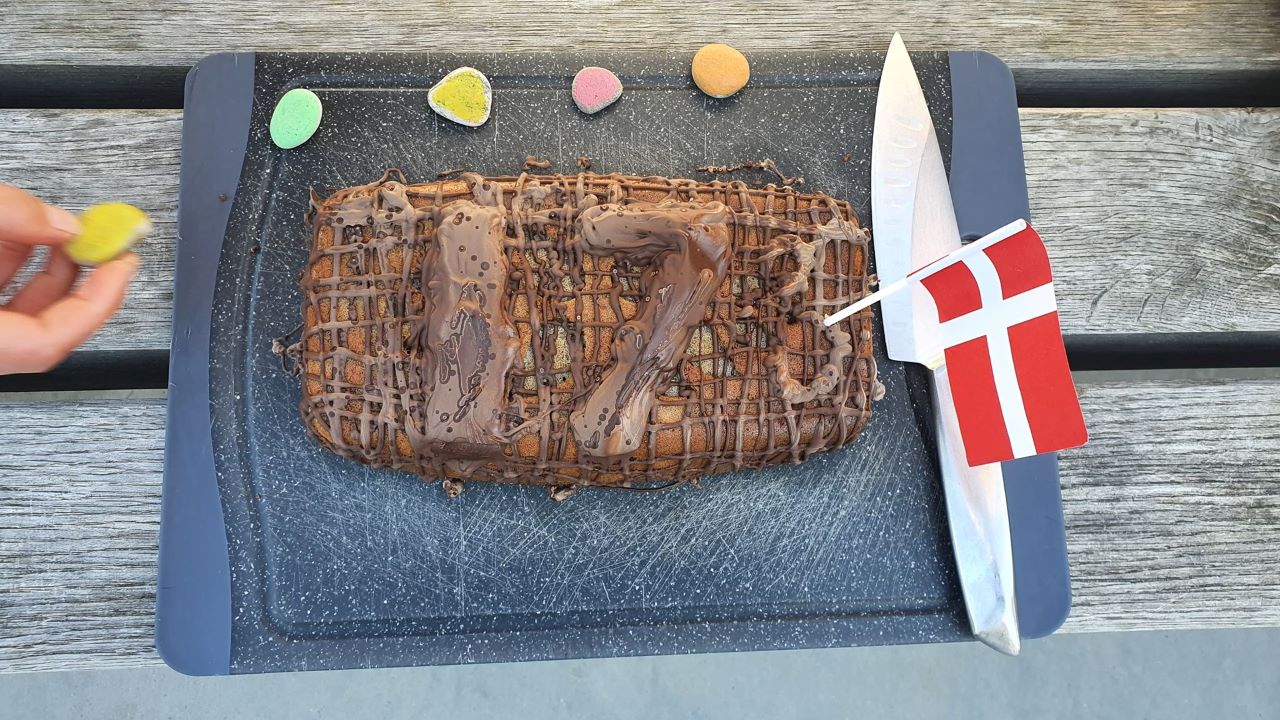 adult Sortmejse(3K+)
adult Sortmejse(3K+)
Highlights fra morgenobs var en rastende Duehøg og trækforsøgende sort glente. Der blev set 202 Lommer trække øst.
Turen startede på Flagbakken hvor vi prøvede på at se den lille skrigeørn der var meldt ud om morgenen. den var dog fløjet retur sydpå. Vi fik stadigvæk set både Sort glente og Fiskeørne så det var ikke forgæves.
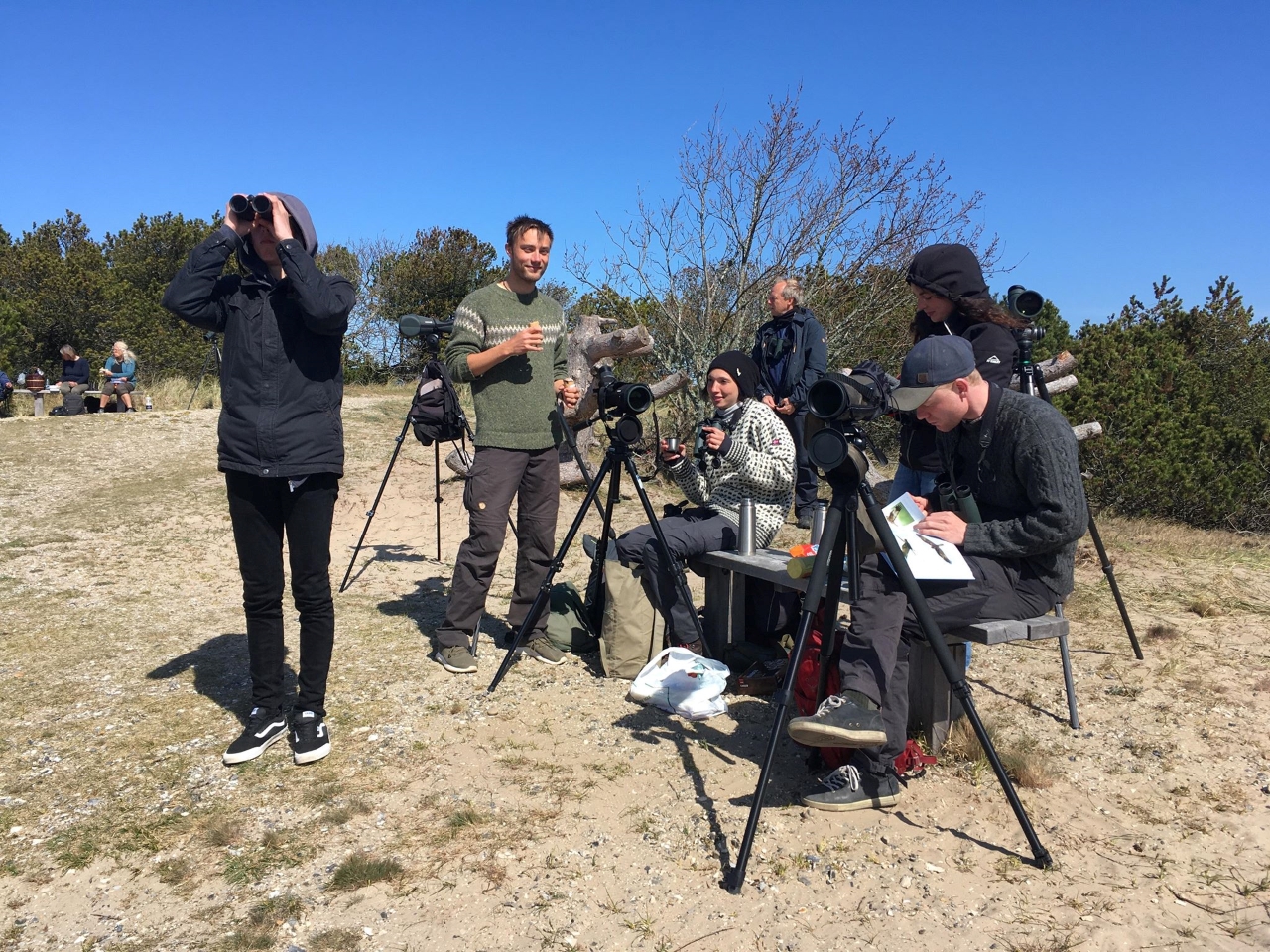 Efterfølgende tog vi ud til Jerupstrand. Her rastede der Gravænder, Strandskader og et par rødben. Stranden er fyldt op med muslingeskaller og Konkylier. Lisa og Daniel fandt 2 der er flere 100 år gamle.
Efterfølgende tog vi ud til Jerupstrand. Her rastede der Gravænder, Strandskader og et par rødben. Stranden er fyldt op med muslingeskaller og Konkylier. Lisa og Daniel fandt 2 der er flere 100 år gamle.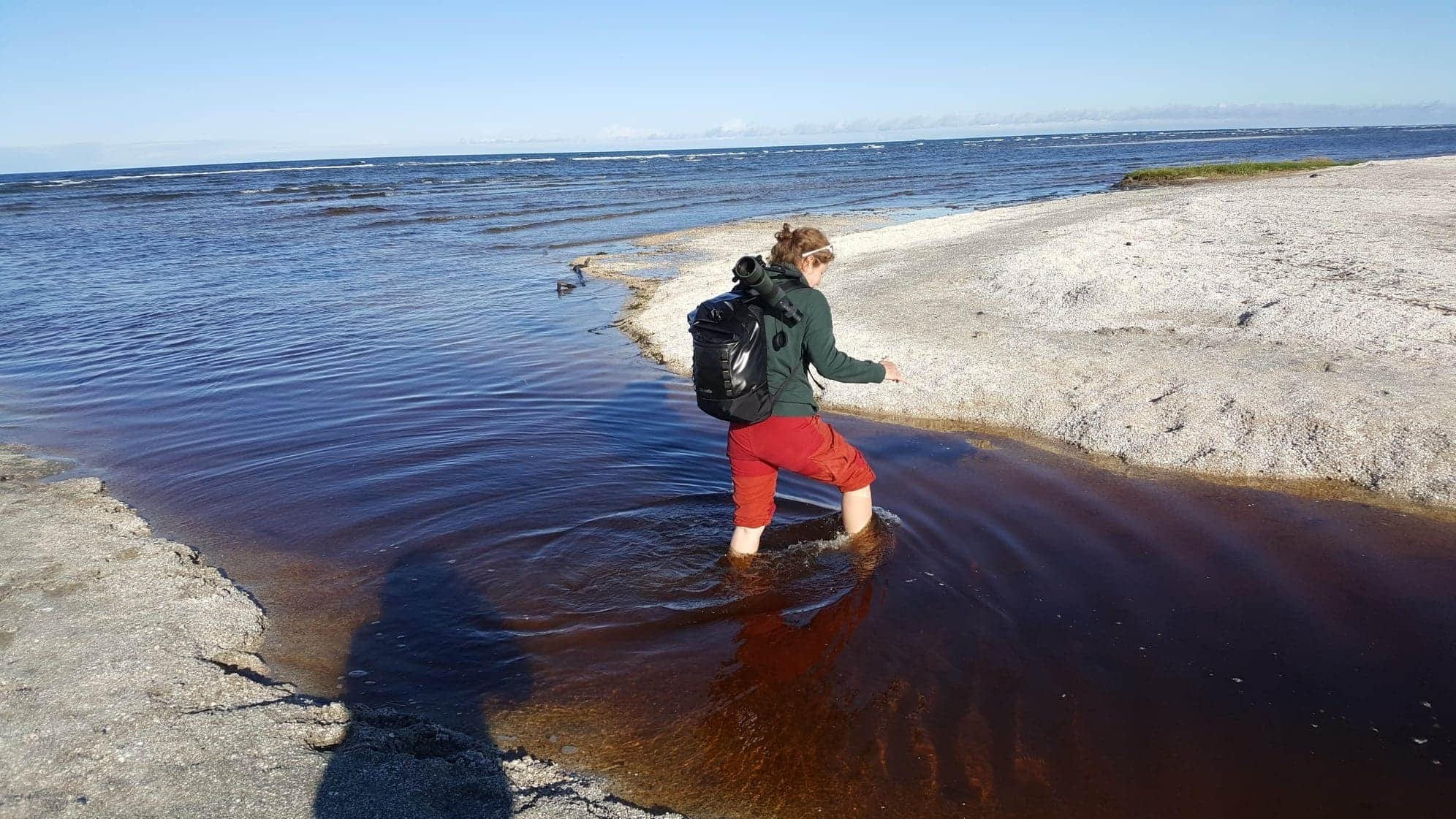 Jerup Strand
Jerup Strand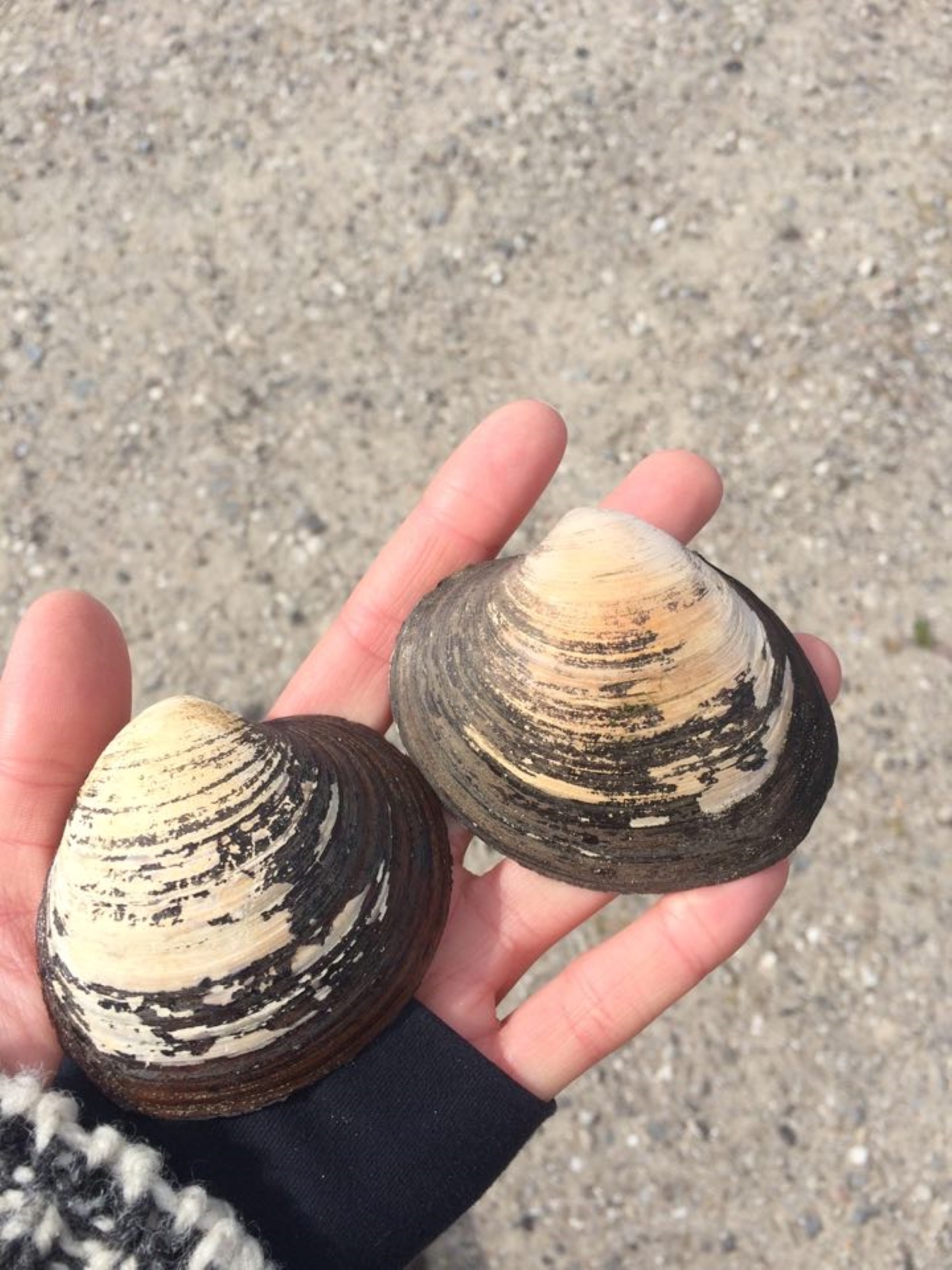 Arctica islandica
Arctica islandica
Sidste stop blev sandmilen, spektakulær udsigt. På den korte gåtur derud så vi Skovpiber, sanglærke og hedelærker.
Vi sagde i dag på gensyn til Bjørn.
Ringmærkning:(Kabeltromlekrattet)
Sangdrossel – Songthrush – 1
Rødhals – Robin – 2
Gærdesmutte – Wren – 3
Løvsanger – Willow warbler – 8
Gærdesanger – Lesser Whitethroat – 2
Sortmejse – Coal tit – 1
Munk – Blackcap – 4
Tree pipit – Skovpiber – 1
Blåmejser – Bluetit – 2
Gransanger – Chiffchaff – 3
Sum: 25
Folk: Simon S. Christiansen, Esben E. Hansen, Bjørn Frikke, Lisa Vergin, Fanny Rey, Frederik R. Johansen og Daniel Bloche.
Klik her for at se dagens observationer indtastet i Dofbasen af observatører i området
Klik her for at se opsummeret observationer af rovfugle i Skagen
Lommer!
I dag startede Esben og Lisa med at åbne nettene, hvor jeg kom lidt efter. Det gav ikke særligt mange fugle i dag, men der var lidt.
Fanny og Daniel var taget til Nordstrandm for at observere. I dag kom der rigtig mange Rødstrubet Lommer og en god sjat Almindelige Kjover. Efter morgen obsen, tog Fanny og Daniel ud for at tælle Skarve kolonien. Den ligger stabilt på omkring de 25 reder.
Bjørn sad ude på Verdens Ende i dag, hvor han var så heldig at se en Islom! Super fedt!
Ringing (Kabeltromlen + Nordstjernevej):
Gærdesmutte - 1
Rødhals - 2
Rødhals - 2
Sangdrossel - 2
Munk - 1
Gransanger - 3
Skovspurv - 1
Grønirisk - 3
Lille Gråsisken - 1
Sum: 16
Klik her for at se dagens observationer indtastet i Dofbasen af observatører i området
Klik her for at se opsummeret observationer af rovfugle i Skagen
Folk: Esben E. Hansen, Bjørn Frikke, Lisa Vergin, Fanny Rey, Frederik R. Johansen, Jørgen Kabel, Knud Pedersen, Jørgen Hulbæk Christiansen og Daniel Bloche.
Vejret var ikke med os!
Det startede med at Esben, Fanny, Daniel og jeg kom til at ringmærke, ok morgen i pilekrattene, men ellers skete der ikke noget på himmelen, det er sådan når vejret driller.
Der tog Frederik og Lisa sig af klittoppen med Rolf og de andre, der skete ikke så meget for dem, men sådan er, lige så tomt som forventet, dagens oplevelse var en Vendehals ved Sandormesporet, samt Stor Korsnæb 9 og Hvidnæbbet Lom. Det er fint med vejr skifte, fordi når der kommer østlige vindforhold og stabilt højtryk igen, kommer der mange ting på himmelen på engang, så der har man en situation at se lidt frem til. De restende broget flue, blev der kun så vidt der vides kun set en i Ellekrattet i dag, der ikke var skyggen af en Rødtoppet Fuglekonge, da jeg var forbi, jeg tog lige en kort tur på Flagbakken men meget tomt, men sådan er det, Lærkefalk, Tårnfalk, Vandrefalk og Dværgfalk. SÅ Sagt på jysk, der skete sku ikke møj, det var bare en tynd omgang, sådan er det.
I morgen står den på lidt bedre vejr til at kigge over Skagerrak, samt et besøg ved skarverne
Sådan er det, det blev til 57 mærket fugle, hvor det meste bestod af Gransanger, Løvsanger og Rødhals,
Michael har I dag ringmærket ved Nordstjernevej Ringmærkning: (Kabeltromlekrattet+Nordstjernevej) Spurvehøg – Sparrowhawk – 1
Rødhals – Robin – 16
Løvsanger – Willow warbler – 8
Rødstjert – Redstart – 2
Dompap, lille – Bullfinch – 1
Munk – Blackcap – 4
Gransanger – Chiffchaff – 23
Fuglekonge – Goldcrest – 2
57 fordelt på 8 arter
Folk:
Simon S. Christiansen, Esben E. Hansen, Bjørn Frikke, Lisa Vergin, Fanny Rey, Michael Ancher, Frederik R. Johansen, Jørgen Kabel og Daniel Bloche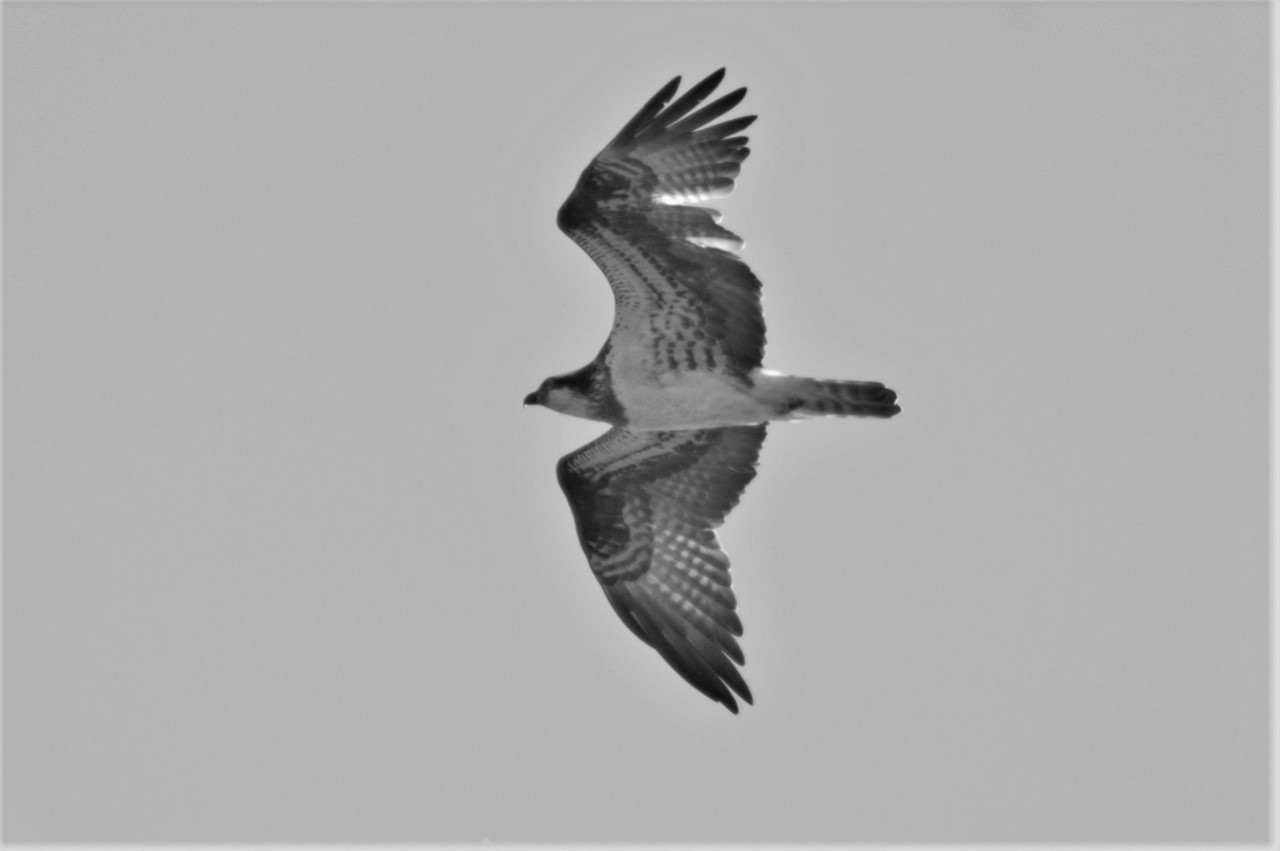
Fiskeørn hun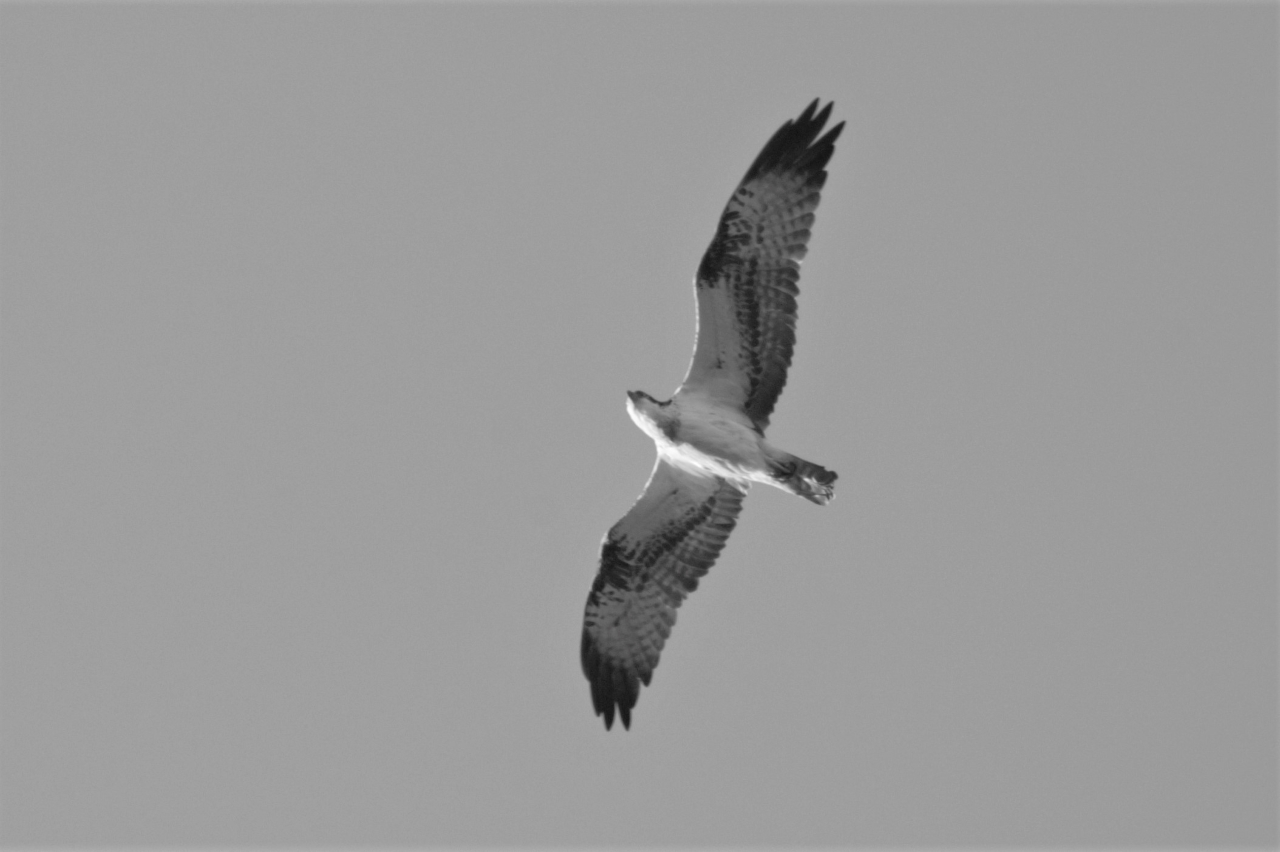
Fiskeørn han
Foto: Bjørn Frikke
Klik her for at se dagens observationer indtastet i Dofbasen af observatører i området
Klik her for at se opsummeret observationer af rovfugle i Skagen
The Eagle-week
After the Lesser Spotted Eagle (Lille Skrigeørn) was seen yesterday afternoon close to Skagen, everyone in the stations team was excited for the eagle to come up to Grenen today. But we had to wait for that a bit longer. Still, Lisa, Fanny, Esben, Joakim, Simon and I had a successful ringing day and were also able to tag two new Robins (Rødhals). All in all, the species in the nets showed us how rapidly the Spring is coming. We ringed the first Lesser Whitethroats (Gærdesanger) and Common Redstart (Rødstjert) for this year. Moreover, we had an increasing number of Willow Warblers (Løvsanger) in the nets. Besides the ringing team, also our two observers, Frederik and Bjørn, had nice observations at Grenen. For instance, a calling Wryneck (Vendehalse), Wood Sandpiper (Tinksmed), Artic Skuas (Almindelig Kjove) or Gannets (Sule).
In the afternoon, some of us got suddenly woken up out of their nap by the Lesser Spotted Eagle which was observed moving towards Grenen. Luckily, we all were in time in front of the Lighthouse to observe this eagle in perfect light. It decided to turn around at the tip, so that we had two great opportunities to observe the eagle and take some pictures. That was a really nice gift for Joakim, rounding up his last day at the Observatory perfectly.
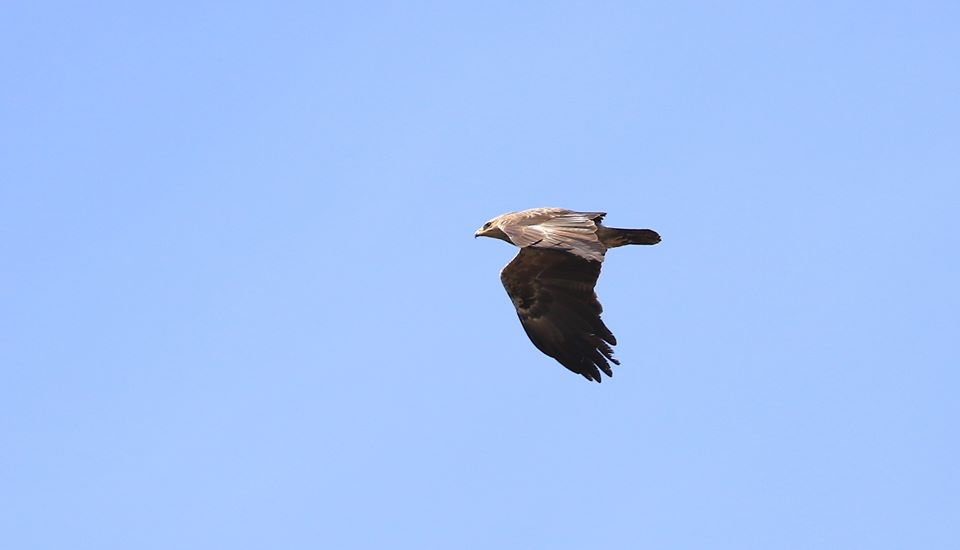
Lille Skrigeørn (pic by Frederik)
Ringing (Kabeltromlen):
Sangdrossel (Song thrush): 2
Gulspurv (Yellowhammer): 2
Rødstjert (Common Redstart): 1
Løvsanger (Willow Warbler): 9
Rødhals (Robin): 13
Gærdesanger (Lesser Whitethroat): 3
Gærdesmutte (Wren): 3
Gransanger (Chiffchaff): 19
Grønsisken (Eurasian Sisken): 1
Munk (Blackcap): 6
Bogfinke (Chaffinch): 1
Blåmejse (Blue tit): 3
Fuglekonge (Goldcrest): 2
Total: 65
Klik her for at se opsummeret observationer af rovfugle i Skagen
Klik her for at se dagens observationer indtastet i Dofbasen af observatører i området
People: Simon S. Christiansen, Esben E. Hansen, Bjørn Frikke, Lisa Vergin, Fanny Rey, Joakim Matthiesen, Frederik R. Johansen, Jørgen Kabel + Igor and Daniel Bloche
Winner of the day : the Robins !
Today Esben, Bjørn and Frederik opened the nets then Lisa, Simon and I came for the first round. We had a good morning with a good number of birds, the species we caught the most was the Robin (Rødhals). It was nice because we need to catch some to put the tags to follow them with the antenna for the radiotelemretry project. Today we tagged 3 new Robin so now we have thagged 14 so far, during last night some of them seems to have left Skagen. We also get a couple of Siskin (Grønsisken) in the net this morning ! It’s not often that we caught them even if we hear them a lot in migration. On the picture you can see the male with a beautiful yellow color.
We also get a recapture of a Goldcrest from Norway! It is even more cool because it is an adult bird! We will know when it has been ringing when we will receive the answer from the ringing center.
Joakim and Daniel went at northbeach for the migration counting with Knud. It was a quiet migration morning at the beginning but when the hit came the raptor start to arrive on good number with Red Kite (Rød Glente), Black Kite(Sort Glente), Buzzard(Musvåge), Routh legged buzzard(Fjeldvåge). The afternoon was very good too with Spoonbill(Skestork) and White stork(Hvid Stork) in the air.
During the afternoon we clean the apartment all together and some of them went out to have a good observation of the Short-ear owl (Mosehornugle).
We found some strange rock today on the way to Jennes sø, someone left them with very nice drawing, very original and a nice surprise

Ringing (Kabeltromlen):
Gransanger 7
Fuglekonge 3
Rørspurv 1
Grønsisken 2
Løvsanger 4
Rødhals 22
Gærdesmutte 3
Sangdrossel 2
Vindrossel 3
Sum: 47
Klik her for at se dagens observationer indtastet i Dofbasen af observatører i området
Klik her for at se opsummeret observationer af rovfugle i Skagen
People: Simon S. Christiansen, Esben E. Hansen, Bjørn Frikke, Joakim Matthiesen, Frederik R. Johansen, Daniel Bloche, Knud Pedersen, Lisa Vergin and Fanny Rey
